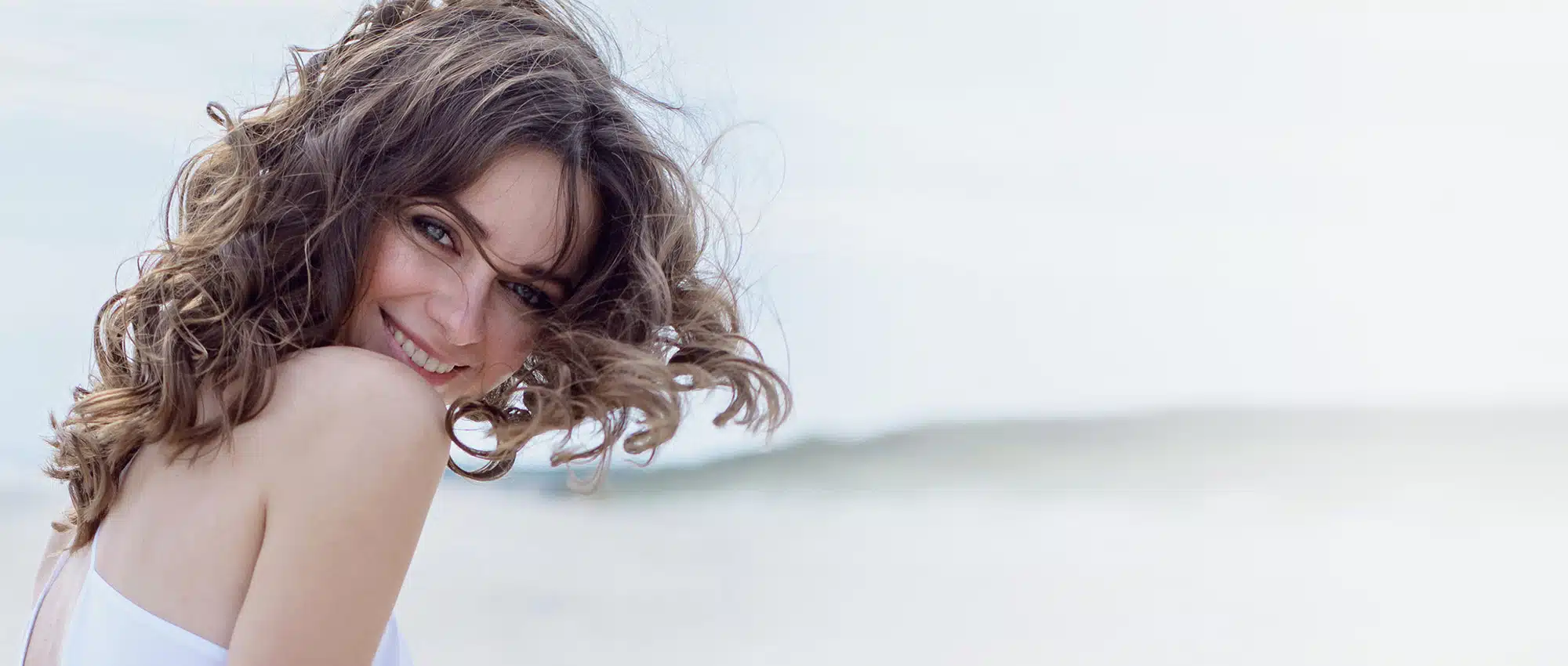
Are you looking for a way to achieve flawless, glowing skin? Laser resurfacing is a revolutionary treatment that can help you get the clear, smooth skin you’ve been dreaming of. With this procedure, you can reduce the appearance of wrinkles, lines, age spots, and other skin imperfections.
In this guide, you’ll learn all about the process of laser resurfacing, from preparation to aftercare. Read on to find out how you can get the skin of your dreams with laser resurfacing.
CONTACT
Benefits of Laser Resurfacing
Laser resurfacing is a revolutionary treatment that can help you achieve the perfect skin you’ve always wanted. It can improve a variety of skin imperfections such as wrinkles, age spots, and lines. Here are more benefits of this amazing treatment:
Flawless Skin
Laser resurfacingwrinkles
Long-Lasting Results
The effects of laser resurfacing usually last for many years so you won’t have to worry about touch-ups for a long time.
Minimal Downtime
The recovery process after laser resurfacing is typically very quick, so you don’t need to take much time off work or everyday activities.
What is Laser Resurfacing?
Laser rejuvenation is a modern cosmetic technique that uses advanced laser technology to improve the overall appearance of the skin. This technique specifically focuses on removing damaged skin cells and promoting the growth of fresh, healthy skin.
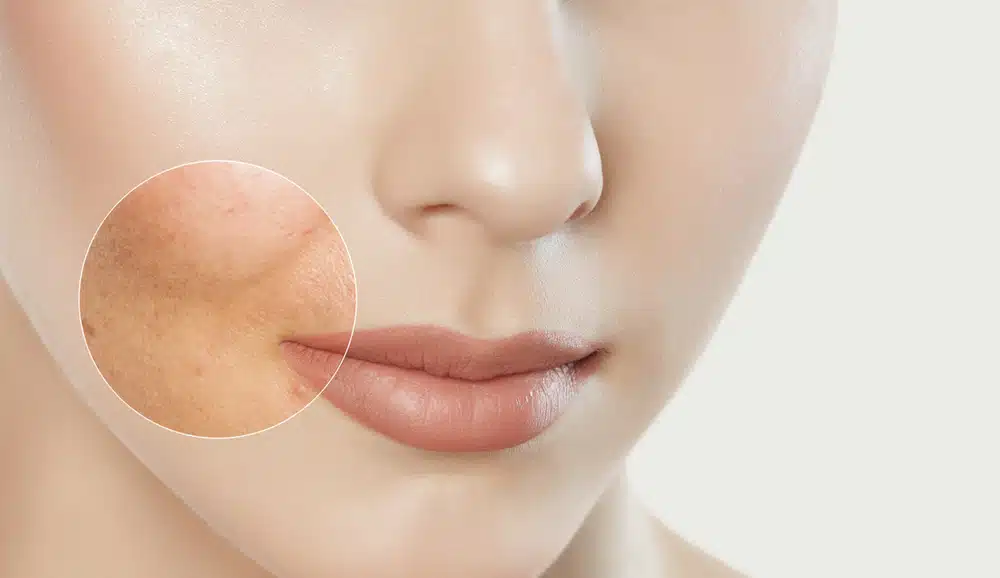
This treatment does the following:
- Reduces the appearance of wrinkles, lines, age spots, and other skin imperfections.
- Promotes collagen production, enhancing skin elasticity and texture.
- Helps in the removal of damaged skin cells, allowing fresh, healthy skin to grow.
- Provides a safe and effective way to achieve smoother, more youthful-looking skin.
- Targets deep wrinkles, scars, and skin discoloration.
- Stimulates collagen production, further improving the skin’s texture and elasticity.
- Long-lasting results, although there may be some downtime for recovery.
Types of Laser Resurfacing
Ablative laser resurfacing
Ablative laserlaser resurfacing
This causes the outer layers of the skin to peel off. As a result, a smoother and more youthful-looking complexion is revealed. This treatment stimulates collagen production, which further improves the skin’s texture and elasticity. Ablative laser resurfacing may require downtime for recovery, but the results are often long-lasting.
Non-ablative laser resurfacing.
Non-ablative laser resurfacinglaser treatment
Instead, they target the deeper layers of skin with heat, stimulating collagen production and promoting skin rejuvenation. Non-ablative laser resurfacing is generally less invasive and requires less downtime compared to ablative treatments.
It can be used to address issues such as fine lines, mild wrinkles, and skin texture irregularities. However, it may require multiple sessions to achieve optimal results.
Fractional laser resurfacing
Fractional laser resurfacinglaser treatment
The process creates tiny wounds in specific areas. This stimulates the body’s natural healing process and encourages the production of collagen and elastin. Fractional laser resurfacing is effective for treating various skin concerns.
These concerns include wrinkles, fine lines, acne scars, sun damage, and uneven skin tone or texture. This treatment is popular because it provides noticeable results with minimal downtime. Many individuals choose this treatment to achieve smoother, more youthful-looking skin.
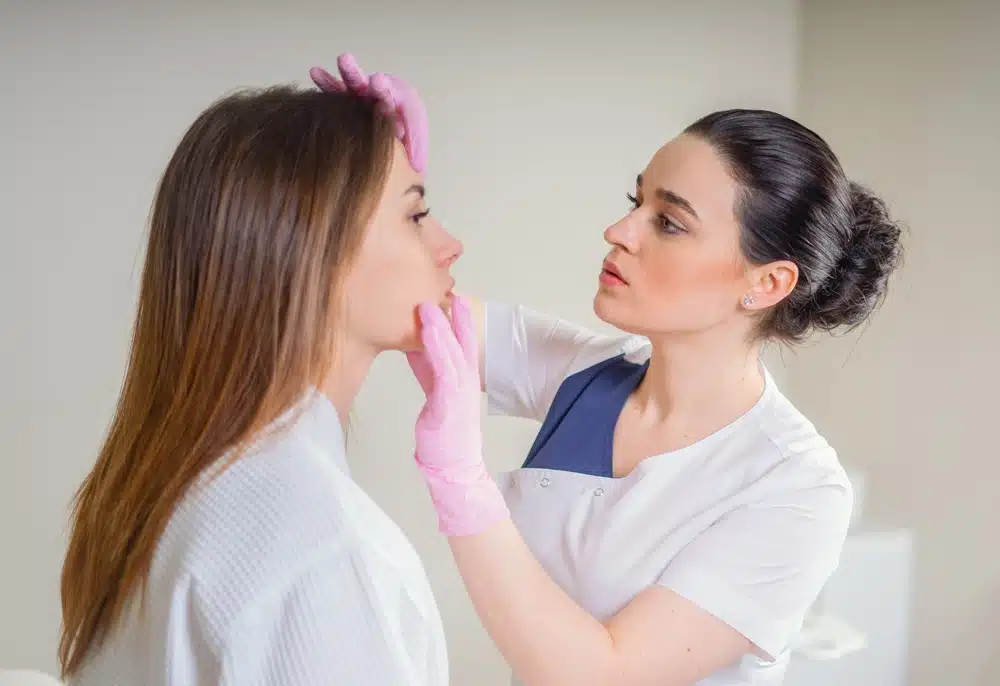
Candidate for Laser resurfacing
A candidate for laser resurfacing is someone who is looking to improve the appearance of their skin. This procedure can help people with concerns like wrinkles, fine lines, acne scars, sun damage, or uneven skin tone and texture. It has various benefits for individuals dealing with these issues. Laser resurfacing is suitable for both men and women of various ages and skin types.
Before undergoing laser resurfacing, it is important to consult with a dermatologist to determine if this treatment is right for you. The dermatologist will evaluate your skin condition, discuss your goals and expectations, and review your medical history. This is done to determine if you are a suitable candidate for the procedure.
In addition to consultation, there are some important steps to take to prepare for laser resurfacing. It is recommended to avoid sun exposure and wear sunscreen for several weeks prior to the procedure.
This helps to reduce the risk of complications and ensures the best possible results. Certain medications and supplements that may increase the risk of bleeding during the procedure should be stopped. Your dermatologist will provide you with specific instructions based on your individual circumstances.
Dr. Schrader and her aesthetic nurse Sam are absolutely wonderful, meticulous and friendly. They offer both educated and artistic suggestions and it shows in the results. Looking forward to going back for a laser skin resurfacing treatment in the Fall. You can trust your face and skin to stay young with this dream team. Not to mention, the staff is incredibly welcoming and kind.
- 5 stars
- Real Patient
Laser Resurfacing Risks
Laser skin resurfacingother skin issues
The most common type of laser used in skin resurfacing is carbon dioxide (CO2) laser therapy. This laser works by emitting bursts of light energy. These bursts remove the outer layers of skin and stimulate new collagen growth. Laser Resurfacing side effects include redness, swelling, and temporary changes in skin color. In rare cases, cold sores may occur due to the heat generated by the laser. Taking antiviral medication before and after treatment can help reduce this risk.
Before undergoing laser treatment, it is important to discuss any concerns you have with your dermatologist. This discussion will help determine if you are a suitable candidate for the procedure. Additionally, it will ensure that you understand all the potential risks involved. With proper preparation and care, you can enjoy smoother, more youthful-looking skin without worrying about negative outcomes.
Overall, laser resurfacing can be a highly effective treatment for achieving smoother, more youthful-looking skin. To become an ideal candidate for laser resurfacing, follow the necessary steps and work closely with a dermatologist. By doing so, you can enjoy the benefits that laser resurfacing offers.
Cost of Laser Skin Resurfacing
The average cost of laser skin resurfacing is typically between $2,500 and $5,000 per treatment. Laser Resurfacing cost can vary depending on the type of laser used, the area being treated, and the number of treatments needed. The price is usually lower when laser resurfacing is done in combination with other cosmetic procedures.
Laser skin resurfacing is considered a surgical procedure and it can be expensive. Before starting a treatment, it is crucial to consult with a board-certified dermatologist who specializes in laser resurfacing procedures.
This ensures that you receive an accurate assessment of your condition. It is important to choose a dermatologist who has experience in this specific area to ensure the best possible outcome. Taking the time to consult with a professional can help you make an informed decision about your course of treatment.
Many medical centers offer payment plans or discounts to help make the cost more manageable for patients.
Preparing for Laser Resurfacing
Preparing for laser skin resurfacing is an important step in the process of achieving smoother, more youthful-looking skin. A plastic surgeon will use laser energy to remove sun-damaged skin and stimulate collagen fiber growth. .
This process involves removing the outer layers of the skin. The laser energy helps stimulate the growth of collagen fibers. This procedure can help reduce facial flaws such as wrinkles, fine lines, acne scars, and uneven tone or texture.
It is important to note that darker skin tones may require special attention and care before undergoing laser resurfacing.
Before undergoing laser resurfacing, it is important to consult with a plastic surgeon. Additionally, there are other steps that should be taken. To prepare for the treatment, it is important to avoid sun exposure for several weeks beforehand.
Additionally, using a topical anesthetic cream during the procedure can help increase comfort. Cosmetic surgery should always be done under the supervision of an experienced surgeon who understands your individual needs. Taking these steps helps ensure safety and optimal results from laser resurfacing.
Laser Skin treatment: Our Lasers
Dr. Schrader’s medical spa offers various lasers that specifically target certain areas of the body and skin conditions. If you are considering laser skin treatment near Somerville or Philadelphia, you have two options. First, you can request a consultation. Alternatively, you can contact our office at 609-279-0009 to schedule an appointment.
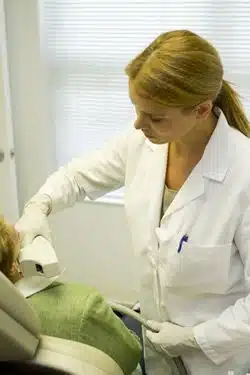
MICRO-LASER PEEL
- Face
- Eyes
- Lips
FRACTIONAL LASER TREATMENT
- Level 1
- Level 2
LASER HAIR REMOVAL
- Face
- Lip
- Underarm
- ½ Legs

INTENSE PULSED LIGHT
- For hyper-pigmentation, sun damage, rosacea and active acne.
- We recommend a series of 3-5 treatments.
- Face/Neck
- Hands
- Chest
Laser Resurfacing Treatments
Phototherapy
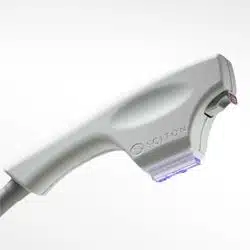
BBL BroadBand Light technologyvarious skin conditions
The light energy delivered by the BBL gently heats the upper layers of the skin. The heat absorbed by targeted areas stimulates collagen growth in skin cells. This helps to restore healthier and younger-looking skin.
Additionally, photothermal energy targets and eliminates fine vessels causing redness. It also targets and eliminates unwanted melanin responsible for pigmented lesions.
Skin Firming
SkinTyte deeply heats soft tissue with infrared energy while protecting the entire treated area with sapphire contact cooling. Targeted heating causes soft tissue coagulation, tightening tissue as it heals and stimulating collagen contraction and remodeling.
This starts the body’s natural healing process. It also creates a new foundation of collagen. This leads to firmer skin.
The skin then appears more youthful. It takes several months to see the final results.
Skin Resurfacing
A laser beam delivered through a computer-controlled device automatically scans the skin being treated. Dr. Schrader controls the ablation and coagulation depth for either light or deep peels. As we get older, the sun and environmental pollutants harm our skin. This damage leads to wrinkles, sun spots, and a tired appearance.
A Sciton laser skin resurfacing procedure can reverse these effects and restore a healthy look to the skin. There are two approaches to resurfacing: full field, and fractional. In full field resurfacing, the entire surface area of the skin is treated. A laser beam is scanned across the treatment area and precisely removes a layer of skin.
The body will naturally replace the old, damaged skin that was removed, with a fresh, healthy layer. The treatments can vary in depth.
Shallow treatments are suitable for eliminating fine lines, sun spots, and tired-looking skin. Deep treatments are often used to improve skin tone/texture and eliminate deep wrinkles. They can even target difficult areas like upper lip lines and crow’s feet.
In fractional resurfacing, the laser removes pinpoint columns of skin, leaving the surrounding tissue intact. This approach allows the laser to penetrate very deeply for effective collagen remodeling, while the surrounding intact tissue promotes rapid healing.
Wrinkle Reduction
Ablative and non-ablative laser or light wavelengths can create thermal tissue injury which accelerates the wound-healing process. Fibroblasts generate new collagen, plumping the skin and correcting skin imperfections. After a procedure, dermal collagen matrix rejuvenation causes visible wrinkles, scars, tone and texture to soften or be eliminated.
Permanent Hair Reduction
Laser or light energy is selectively absorbed by the melanin in hair follicles and converted to heat, diffusing to and injuring growth factors in the bulb and bulge. Effective hair reduction can only be achieved during the active growth phase and hair reduction is considered permanent when a significant amount of hair does not return for a period of time longer than the complete growth cycle. After a series of treatments, most hair is permanently removed. However, if hair does regrow it will be finer and lighter than before.
Dr. Schrader is the only one I would ever call. She looks great herself, listens to you concerns and knows exactly what to suggest without going overboard. She treats you in a very gentle way, minimizing any unnecessary pain. Also her aftercare is excellent and personal. I saw her for Laser treatment, Voluma and Juvaderm. Her office is clean, her staff is very open, friendly and helpful. Her beauty specialist is very knowledgeable.
- 5 stars
- Trouper
Laser Resurfacing Aftercare Tips
- Keep skin clean and dry
- Apply prescribed ointments and creams to reduce inflammation
- Avoid sun exposure and wear sunscreen to protect the skin from UV rays
- Avoid strenuous activities that could cause excessive sweat accumulation
- Drink plenty of water to stay hydrated
Click here to request your consultation with Dr. Schrader.
Why Choose Dr. Schrader
- She is a double board-certified surgeon in Facial Plastic and Reconstructive Surgery and Otolaryngology & Head/Neck Surgery.
- Dr. Schrader is a member of the American Academy of Facial Plastic and Reconstructive Surgery.
- She has over 20 years of experience, 15+ years in private practice, and has performed hundreds of facelift surgeries.
- Dr. Schrader Recognized as Best Plastic Surgeon by Town Topics Readers’ Choice Awards.
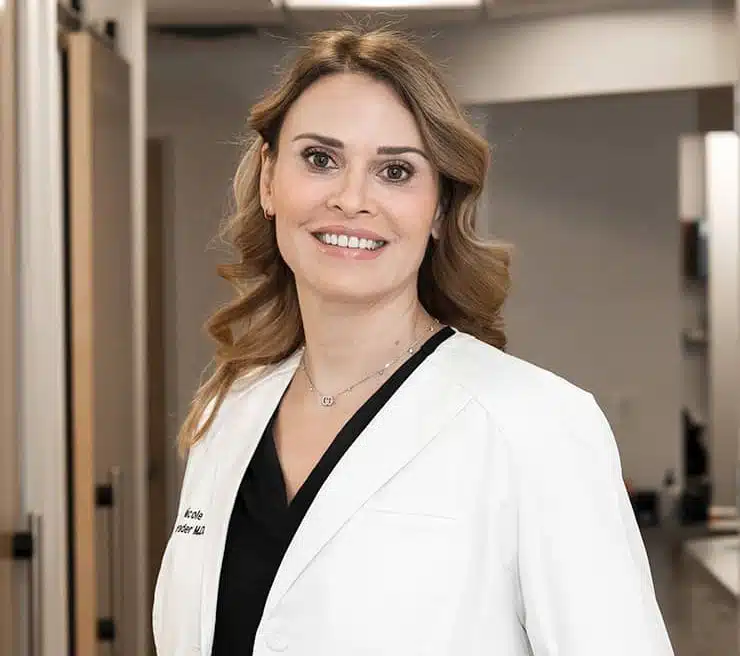
Frequently Asked Questions about Laser Resurfacing
Which skin conditions can laser resurfacing effectively address?
Is laser resurfacing painful?
What is the typical duration of the recovery period following laser resurfacing?
Are there any side effects or risks associated with laser resurfacing?
How many sessions of laser resurfacing are required to achieve optimal results?
Is it feasible to integrate laser resurfacing with additional cosmetic procedures?
What Laser Resurfacing office is near me?
Author






































